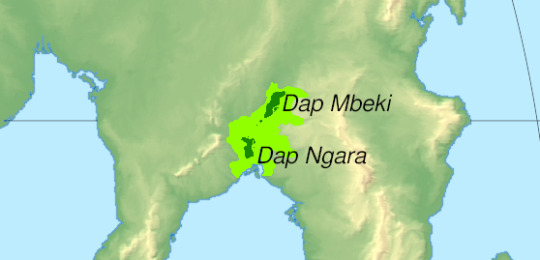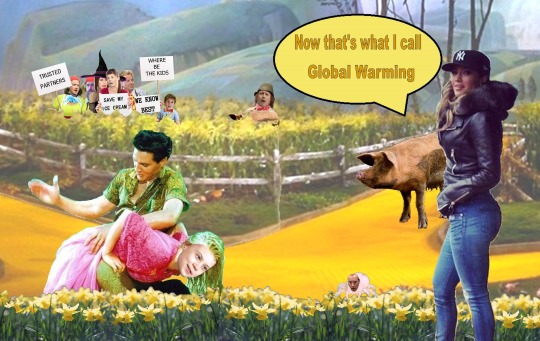#Gobal Warming
Explore tagged Tumblr posts
Text
WHY IS IT 80 FUCKING DEGREES OUTSIDE.
I hate everything, you know what this means????? I can't play sims on my computer, I think the sheer heat would send me into heat stroke,
This is devastating
#sims#sims 4#gobal warming#global wamring#what#GLOBAL WARMING#there we go#uhhhhhhhhhhhhhhhhhhhhhhhhhh#sims 4 gameplay#sad face
1 note
·
View note
Text






Oh how the turn tables ~
It's been referred to as "coolcation" in the media here: apparently it's a new trend for the southern Europeans to vacation in Norway during summer to avoid the intense heat around the Mediterranian these last couple of years.
#hetalia#aph norway#aph greece#aph italy#aph france#aph portugal#aph spain#hws norway#hws greece#hws france#hws italy#hws portugal#hws spain#it's not like we don't have intense heat here as well in the summer now - but at least it's not usually in the 40s 😳😳😳#gobal warming is a bitch
330 notes
·
View notes
Text

#pictures of ace#i'm chilly as fuck yall#and i have layers AND handwarmers#i was not made to withstand the arctic#coincidently my ancestors weren't either#which is why I live in THE FUCKING OHIO/WABASH RIVER VALLEY#AND NOT IN ALASKA#who let Boreas touch the thermostat?#what the fuck ya'll#it's Halloween not the Winter Solstice#global warming i'm gonna kick your ass#gobal warming is real#and it's coming for the bees AND my arthritic knees
1 note
·
View note
Text
lando sponsor duties are chill and oscar’s are What If Formula 1 Driver Oscar Piastri Solved Gobal Warming
637 notes
·
View notes
Text
why the hell is saints time so cold?!?
this is one of the things that had been bothering me since downpour came out, and its explaination in the iterator chatlogs bothered me even more: what do you mean the suns light isnt warming the planet anymore?

After all, water vapor doesnt prevent warming, actually the opposite; its technically a greenhouse gas
Well fear not, for after agonizing over this for several months i have realized something
The (we're calling them benefactors now right..) benefactors had a sulfur problem, as evidenced in a white pearl:
This is the genome of a sulfur-processing microbe. In my opinion these were used far too late to have any effect.*
now. The sulfur could have been in the ground or water, but that wouldnt have been quite as big of a problem and it most likely wouldnt lead to the extinction of most creatures
What would though, is if you had massive amounts of it in the air
One of sulfurs properties is that it causes global cooling by reflecting the suns light back out to space, this is one of the reasons gobal temperatures drop after a volcano erupts
And compared to carbon it needs very little sulfur to cause noticeable effects
So if you put mass amounts of it into the atmosphere it could possibly block the stars heat causing the iterators to be the only thing keeping the world warm
and that is why saints time has so much snow, its because of the atmospheric sulfur!
#Rain world#Theoryposting#Theory#Rainworld#Comrade speaks#Hopefully this is comprehensible..#And ok to read
73 notes
·
View notes
Text



⠀⠀🎏 ⠀⠀⠀⠀venus planet of love⠀⠀ ﹢ ⠀⠀⠀ ✿



🎆 ⠀⠀was destroyed by gobal warming⠀ ﹢ ⠀✿



#luvsvivi# ⁺ . ⁺ . ⁺ ﹒ #kpop moodboard#moodboard#kpop#a whisker away#anime moodboard#orange moodboard#japanese moodboard
51 notes
·
View notes
Text
Biomes of Sogant Raha: The Mountain-Forests

[Above: Southeastern Altuum, with the larger Dappese biogeographical region in light green, and the “mountain-forests” in dark green.]
Dappese: dap khu, “true forests;” Larian: gobale, “big forests;” Seqqel: hovalla, “great forests;” Masari: shinsen, “god-forests;” Toschek: dirkabiyar, “green fog mountains”
Outside of the (now greatly reduced) region of xenogrowth, almost all biomes on Sogant Raha have some kind of terrestrial analogue, dominated by endobiota not much different from those common on the Earth when the Exiles departed millennia ago. One unique region, however, are the the forests of Dap Mbeki and Dap Ngara, home of the Dappese people. Much of the surrounding region is subtropical woodland and forest, watered by warm prevailing winds from the southwest that bring masses of moist air up from the southern sea. The most common plants in this region are deciduous trees and shrubs, and the climate is warm, and exceedingly good for agriculture along the rivers that carry rainfall and snowmelt down from the surrounding mountains. But at the heart of this region, the geography shifts suddenly: in the distance, rising thousands of feet above the lowlands, great peaks are seen, their flanks shrouded in fog. These are not wooded slopes of isolated hills or volcanic remnants: these are living trees, the size of mountains.
The key to the history of this region, and to the nature of these immense forests, lies with the Dappese themselves. Sixty thousand years ago[1], the people of the Ammas Echor arrived in orbit of the planet and began their colonization efforts in what is now western Altuum. These were the first and the most significant group of Exiles to reach Sogant Raha early in its history, but not the only ones. More than ten thousand years later, a second vessel, called by its crew the Sanardur-nasandaburkant followed in the footsteps of the Ammas Echor; and what they found when they arrived disturbed them greatly.
[1] Taking, for the sake of convenience the Conn sacking of Presh as marking roughly the beginning of the “present era” of Sogant Raha, and using our measurement of the year rather than the local one.
The Sanda, as they called themselves at the time, were of a very different branch of the Exile than the Janese of the Echor. The ancestors of the Janese had sighted Sogant Raha long ago via the orbital transit method, which had shown them a world rich in water and oxygen, with many signs of an active biosphere, and they had reengineered their entire culture and their civilization in the hopes that their descendants would one day reach this world. In comparison, the Sanda were latecomers; their ancestors had detected planets around Kdjemmu (which they called Nakarriban) via the radial velocity method; the numerous small worlds around the star intruiged them, especially the one in the relatively clement circumstellar habitable zone, but they did not expect a world rich in liquid water and breathable air, and they certainly did not expect a world already peopled by humans.
The Sanardur-nasandaburkant was a small ship by the standards of the Exile, but a very technologically advanced one. Unlike the Janese, the ancestors of the Sanda had never lost the universal cell technology; indeed, they had been fortunate enough to occasionally invest time and energy in improving it, and improving their biotechnology generally. What they did not have, however, was a complete copy of the Great Record: an ancient schism had caused theirs to be lost to them, and compared to the millions of species of endobiota contained in the Ammas Echor’s Record, they had data on only a few thousand, much of which was incomplete. They had made much use of this information to hone their understanding of genetics and biology, and that expertise they had used to further adapt themselves to life in difficult environments–the Sanda were a hardy people, with a striking range of phenotypes very different from baseline humans, able to endure microgravity environments and radiation far better than baseline humans.
Only in the last years of their approach to Kdjemmu did the Sanda realize that the planet hosted a biosphere, a discovery as momentous to them as it had been to the Janese. In the course of the final breaking maneuvers used to enter orbit, it also became apparent that the Sandese were not the first humans to reach this world; and this information troubled them greatly. With their long memories, even if the earliest origins of mankind in Paradise were a hazy memory, that humanity in the Exile was a pale shadow of its former self. True, our species endured. On many worlds we even approached something like prosperity. Enough that, from time to time, some of those worlds could afford to build new ships, to crew them with new explorers, and to hope that somewhere out in the great darkness there could be a life less balanced on the precarious knife-edge of survival. But compared to the first few hundred thousand years of our species existence, in the lush springtime of of the world in which we were born, the amount of spare productive capacity that could be put to ends other than survival–that could be used for innovation, or creativity, or expansion–was paltry. So why, arriving at a planet as perfectly suited for human life as Paradise had been, did the Sanda find only silence?
Careful exploration of the surface was conducted; it was soon evident that some terrible catastrophe had befallen the first colonists on this world, and they had lost a great deal of the technological knowledge they had arrived with. The nature of this catastrophe was impossible to discern–it was wrongly conjectured to be linked to the layer of ash in the soil near the surface, a remnant of the Burning Spring, and to the ruins of the large concrete and steel cities that by this time dotted much of Altuum, Vinsamaren, and Démora. In fact, what the Sanda did not realize was that the catastrophe was not one, but many; and that they were ongoing. As they explored the surface, the dreaming planetmind observed them; and she was, insofar as we might analogize her experiences with our own, afraid--these were, after all, newcomers of the same kind that she had already judged a threat, and which had already radically changed her environment.
The initial plan of the Sanda was to maintain a presence in orbit, and to establish a small colony on the surface; they hoped to make contact with friendly locals, to build a small industrial base, and perhaps within a few centuries send a small vessel, with news of their discovery, back to their people. They succeeded only in partially accomplishing the first two of these goals; since the days of the first arrival of humans on the surface, some species of tahar had made major adaptations to living inside of the human body, and the first visitors of the surface brought it back to the ship. Within a few months, confusion, hallucination, and heightened aggression set in among the Sanda; their ship was sabotaged by crewmen who could later not explain why they did it, and they were forced to flee to the surface.
They brought with them enough of their technology to understand a little of their enemy, though; and they were able to genetically modified themselves to make their bodies less hospitable to the tahar. They also maintained much of their technological base long enough to adapt endobiota to create a protective habitat, one which could protect them from hostile invaders, and which would not require redeveloping an entire agricultural civilization overnight to keep from starving. This was the beginning of the great forests: chimeric strains of trees, mixing together cell lines from several distinct species, and borrowing many of the signalling mechanisms used by the tahar itself to regulate the resulting symbiotic relationship. At first, they were a source of food, of building materials, and of shelter; soon, though, the Sanda began to refine them further, and they became much more.
The native Dappese word for these organisms now is karuda, “mountain-tree;” and though a karuda may begin life as a sapling or a bulb, once fully-grown it is not much like its mundane cousin. Most woody endobiota rely on a system of xylem and phloem to move moisture and nutrients throughout their tissues; capillary action, transpirational pull, and the solute pressure of sugars in the phloem help to transport water from the roots to the leaves; hydrostatic pressure moves sugar-rich sap back down to nourish the tissues in the rest of the plant, all ultimately through a central trunk. In the karuda, the vascular system is much more complex; water and various nutrients are moved through as many as four different kinds of vascular tissue, which use active transport methods that can reach much higher pressures. As a result, where most trees on Earth could only slightly exceed a hundred meters or so in height, the karuda may be as much as three kilometers tall.
At that size, the upper foliage collects an enormous quantity of sunlight; much of the energy collected in this way is used to support the vascular tissue. A karuda is more akin to an immense colonial organism than a single plant; it has thousands of trunks which wind together and branch apart, creating an immense open lattice beneath its upper foliage. It is in these spaces that most of the Dappese, the descendants of the Sanda and neighboring peoples, now live; they can shape them with pruning and twisting methods to create living enclosures, to modulate the movement of air, and–on large scales–even to alter local weather patterns.
A karuda is as much an environmental engineering project as a habitat: they draw immense amounts of groundwater up into their branches, and the transpiration of water in the upper foliage creates masses of moist air, warmed by sunlight and the metabolic processes of the vascular tissue, that support immense hanging gardens. At the forest floor, so little light reaches the ground that it is nearly night-dark; here, the temperature is constant, and the air is mostly still. Where the warm air of the upper foliage and the cool air at ground level mix, there is a thick, turbulent fog layer; here, another layer of growth captures the moisture that condenses and what little light makes it down to this layer, and various arboreal animals thrive that the Dappese hunt for food.
The Dappese of later generations are not much like their Sanda ancestors. Culturally and linguistically, they are a fusion of the Sanda colonists and friendly peoples they allied with when they were forced to the surface; their language is in fact principally Sogantine, though with considerable Sanda influence–the prenasalized consonants of mbeki (“north”) and ngara (“south”) are reflexes of the Sanda nasal prefix, seen in both Nakarriban (na-karri-ban, “target star, star to which we are going”) and nasandaburkant (literally, “the vessel our people are traveling in”). Without the ability to produce the necessary technical equipment, the Dappese have lost the genetic engineering technology and machine construction capacity of their ancestors. But they have retained a long oral and written historical tradition, and they remain excellent astronomers and mathemeticians; alone of all the peoples of Sogant Raha, they have never forgotten that this is not their original home, and that humanity originated in the stars.
They are also physically distinct; although their exact appearance varies as it does in any human population, the prototypical phenotype of the Dappese is gray-skinned, with feet almost as good at grasping as hands, a great deal of flexibility, and the ability to easily adapted to a more rarefied atmosphere, such as that found at the summits of the karuda. About half of all Dappese have a second thumb instead of a fourth finger, a relic of ancient genetic modification.
Politically, the Dappese are only loosely affiliated; the region has proven inhospitable either to state-formation or the intrusion of surrounding polities. In the woodlands and forests, foraging, hunting, and light agriculture predominates; most inhabitants live in small villages, with larger trading towns forming a network of settlements that is important for the diffusion of technological and cultural innovations. Among the karuda, comparatively high population densities are possible, thanks to the large amount of vertical space and the possibility of layered horticulture. There are no large cities, but the whole volume of the karuda constitutes something like a vast townland, and the karuda-forests have a population of around eight or nine million.
A single karuda is often regarded as an economic and cultural unit; there are dialectical differences between karuda, and differences in custom and tradition. Governance, such as it is, is commonly based around village leaders or small councils, with matters concerning the whole tree sometimes requiring vast assemblies to negotiate. The stability of the environment, the lack of competition for resources, and the slower growth of karuda-adapted populations have tended to reduce the amount of large-scale conflict, although wars, both internal and external, are not unknown.
The most severe conflict which occurred in the history of the Dappese was in fact very recent: a generation ago, the nascent Conn empire sought to extend its dominion over southeastern Altuum. They made it all the way to the eastern coast, conquering numerous wealthy states in that region, but the Dappese forests presented a major barrier to expansion south, especially to the nearer parts of the Windlands. Initial forays using Conn cavalry into the forests were disasters; heavy infantry from the northeastern states, organized under Conn commanders, were more successful, but they had no useful tactics for penetrating the karuda, which the Dappese were far more capable of fighting in anyway.
The solution to continued resistance was simple: fire. By damaging the lowest levels of the karuda with oil-driven fires, the trees could be wounded, their upper layers could be deprived of water, and, as the wood dried, eventually the fire would spread to the upper levels. A series of unusually dry summers worked further in the favor of the Conn; within ten years, most of Dap Mbeki and large portions of Dap Ngara had been destroyed. One karuda was the work of dozens of generations of careful gardening; the Conn, in their hunger for conquest, destroyed thousands. Millions of Dappese died in the war; others fled south and west, trying to stay ahead of the rapidly expanding frontier of Conn conquest.
The consequences of this war were disastrous for the world as a whole. There was an immense loss of Dappese science and culture, of course; but the smoke plumes from the fires rose high into the stratosphere, and soon blanketed the world. The amount of ash released was equivalent to many Krakatoas, and it took decades to clear. The global temperature fell sharply, resulting in crop failures, famine, and disease; unknown to the Conn, this worked even further to their advantage. Famine and the resulting conflict in the west greatly weakened the states of Oethiam and Nebressa; Presh’s volume of trade declined, resulting in a small regional economic collapse. Twenty years later, when the Conn armies appeared on the horizon, there were few states positioned to resist them, and many princes were willing to turn on their neighbors in exchange for a favorable position in the post-conquest order.
Eventually, after the collapse of the Conn empire and the return of many Dappese refugees, the process of rebuilding the god-forests began; there has even been talk of planting new karuda to the east, to found a new forest: Dap Tassama, “the forest of rebirth.” It may be many centuries before the lands of the Dappese return to their former prosperity; but the Dappese are patient, and are already looking forward to a future that is even brighter than before.
13 notes
·
View notes
Text
Wonder if there will be a day where we don't have to hear about "gobal warming" or "greenhouse gases" or "carbon footprint". I guess it's a never ending cycle of young naive people that want to save the world. I'll admit when I was younger I believed (because it's taught in school) but I grew out of it in highschool once I realized that it was all bullshit and the non stop doomsday predictions just failed every time.
It's all a big savior complex, at it's core. People who want to do the right thing and "save the world", ironically the most narcissistic people incapable of realizing that they're just pawns of the elite, trying to usher in a new world of slavery for the poor people, meanwhile the elite will never stop taking private jets and eating meat. They just want things like cars and meat to be a luxury item and are using the naive to push for it under the guise of "saving the planet".
I'd like to think it'll end, that one day after the Xth amount of doomsday failures happens that people will wake up, but I don't really have faith in humanity for that. Every year they claim either the cold weather or the hot weather is both equally "climate change" when there's just temperature fluctuations from decade to decade naturally. But I do love how they're able to claim it either way. Not to mention that ironically the methods that use the less industrial means, like pasture raised animals, are vilified the most, all the while they want to force the most ecological damaging plants like soy beans to be the main staple.
I'd actually be for a reduction in industrialization and a return to more traditional lifestyles around farming and agriculture and smaller communities, cities are unironically a plague on the world and humanity itself. But the climate movement ironically condemns that lifestyle and wants to push for 15 minute slave cities, failing to realize how that's not anyway for humans to live, let alone how damaging it is for the world to sustain such a model.
It's all so tiresome.
0 notes
Text
May 2023, It is May 1st and it feels like March! It should be warm and sunny. Not gloomy, raining and in the low 40′s! I truly believe this is to Gobal Warming! UGH!
1 note
·
View note
Text
4 notes
·
View notes
Link
If you have any issues with the document please feel free to join the discord and discuss it! -> Discord.gg/RGR
#gobal warming#climate change#climate#riley grace roshong#rgr#research#research doc#sources included#law student#youtuber#streamer#trans#transgender#lgbt#lgbtq
3 notes
·
View notes
Link
#climate science#climate change#climate justice#gobal warming#planet earth#saveanimals#savetheocean#savethebees#saveearth#savemotherearth#savemothernature#saveplanet#savethesummer#savewinter#savethemanuals#save our planet#save summer#savewildlife#save water#save mother earth#save our home#save our only home#save the planet
1 note
·
View note
Text
It genuinely bothers me when people say being eco friendly is bad for the economy because they're gonna have to pay for the damage the climate change caused. Like flooding and droughts will cause an increase in prices of foods because there will be less. Less food means less workers. Less workers means more people in poverty. More people in poverty means higher crime rates. All of theses things are bad for the economy. Like. What. What is good for the economy is plentiful food. More food means more work. More work means lower crime rates. Those are all good for the economy. Like. Sis. This is just looking at ONE aspect of climate change. Besides, many of us would be very happy to spend money on eco friendly products rather than non eco friendly products.
135 notes
·
View notes
Text
Maybe the world did end in 2012 and our consciousness was just uploaded to a hell-like simulation because Jesus Christ things are gettin' more freaky and scary since that year and it all don't feel real
#textpost#shippost#meme#dank meme#tumblr#gremlins#world#ending#funny#joke#gobal warming#climate change#donald trump#theresa may#politics
83 notes
·
View notes
